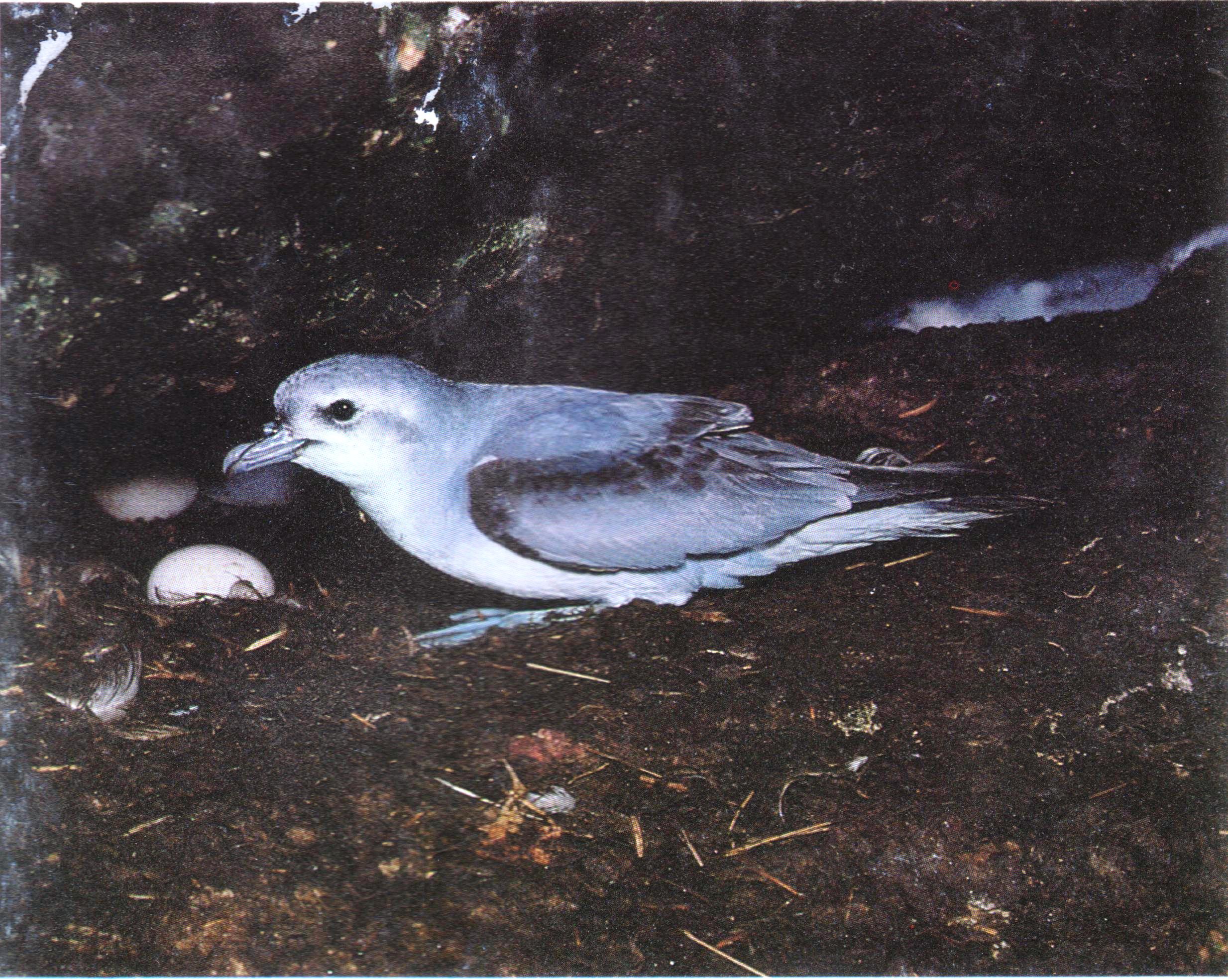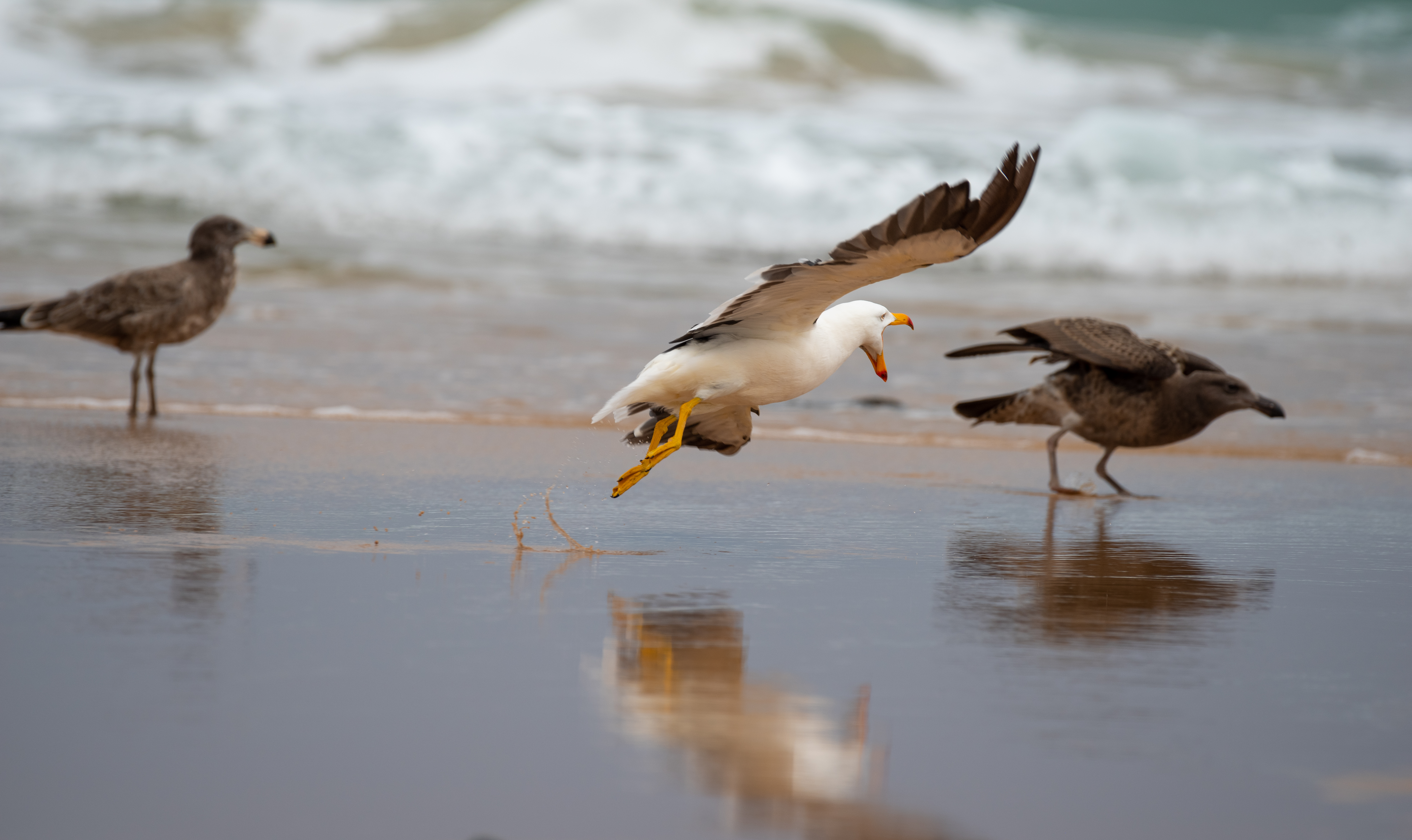|
East Pyramids
The East Pyramids comprise a group of three steep, rocky unpopulated islets located close to the south-western coast of Tasmania, Australia. Situated some south of where the mouth of Port Davey meets the Southern Ocean, the islets are one of the eight islands that comprise the Mutton Bird Islands Group. The East Pyramids are part of the Southwest National Park and the Tasmanian Wilderness World Heritage Site. Flora and fauna The islets are part of the Port Davey Islands Important Bird Area, so identified by BirdLife International because of its importance for breeding seabirds. What vegetation there is on these rocks is dominated by ''Poa'', pig face and ferns. Recorded breeding seabird species are the fairy prion (100 pairs), Pacific gull, silver gull and black-faced cormorant. See also * List of islands of Tasmania Tasmania is the smallest and southernmost state of Australia. The Tasmanian mainland itself is an island, with an area of - 94.1% of the total land are ... [...More Info...] [...Related Items...] OR: [Wikipedia] [Google] [Baidu] |
Landsat
The Landsat program is the longest-running enterprise for acquisition of satellite imagery of Earth. It is a joint NASA / USGS program. On 23 July 1972, the Earth Resources Technology Satellite was launched. This was eventually renamed to Landsat 1 in 1975. The most recent, Landsat 9, was launched on 27 September 2021. The instruments on the Landsat satellites have acquired millions of images. The images, archived in the United States and at Landsat receiving stations around the world, are a unique resource for global change research and applications in agriculture, cartography, geology, forestry, regional planning, surveillance and education, and can be viewed through the U.S. Geological Survey (USGS) "EarthExplorer" website. Landsat 7 data has eight spectral bands with spatial resolutions ranging from ; the temporal resolution is 16 days. Landsat images are usually divided into scenes for easy downloading. Each Landsat scene is about 115 miles long and 115 miles wide ( ... [...More Info...] [...Related Items...] OR: [Wikipedia] [Google] [Baidu] |
Port Davey Islands Important Bird Area
The Port Davey Islands Important Bird Area comprises over 20 small, rocky islands scattered both within, and in the vicinity of, the mouth of Port Davey, an inlet on the south-west coast of Tasmania, Australia. They all lie within the Southwest National Park and are important for breeding seabirds. Birds The sparsely vegetated islands, with a collective area of 163 ha, have been identified by BirdLife International as an Important Bird Area (IBA) because together they support over 1% of the world populations of short-tailed shearwaters (c. 950,000 breeding pairs), fairy prions (c. 27,000 breeding pairs), little penguins (c. 16,500 breeding pairs) and black-faced cormorants (up to 230 breeding pairs). Pacific gulls and sooty oystercatchers also nest in the islands.BirdLife International. (2011). Important Bird Areas factsheet: Port Davey Islands. Downloaded from http://www.birdlife.org on 20/09/2011. Islands ;Breaksea Island group * Breaksea Islands * Kathleen Isla ... [...More Info...] [...Related Items...] OR: [Wikipedia] [Google] [Baidu] |
Islands Of South West Tasmania
This is a list of the lists of islands in the world grouped by country, by continent, by body of water A body of water or waterbody is any significant accumulation of water on the surface of Earth or another planet. The term most often refers to oceans, seas, and lakes, but it includes smaller pools of water such as ponds, wetlands, or more rare ..., and by other classifications. For rank-order lists, see the other lists of islands below. Lists of islands by country or location Africa Antarctica Asia Europe North America Oceania South America Lists of islands by continent Lists of islands by body of water By ocean: By other bodies of water: List of ancient islands Other lists of islands External links Island Superlatives {{South America topic, List of islands of * ... [...More Info...] [...Related Items...] OR: [Wikipedia] [Google] [Baidu] |
List Of Islands Of Tasmania
Tasmania is the smallest and southernmost state of Australia. The Tasmanian mainland itself is an island, with an area of - 94.1% of the total land area of the state. There are more than 1000 smaller islands which have a combined area of , making up the remaining 5.9% of total land area. Classification structure A considerable number of Tasmanian islands are identified as being in island groups, including the Breaksea, Furneaux, Hogan, Hunter, Kent, Maatsuyker, Mutton Bird, New Year, Swainson, Trumpeter, and Waterhouse groups. Regions Similar to Regions of Tasmania the islands are generally distinguished by the coast that they are adjacent to, as well as Bass Strait - the main separation from the mainland state of Victoria. Five regions are aligned to the north coast and Bass Strait - ''North West Islands'' (including King Island), ''North Coast Islands'', ''North Bass Strait Islands'', ''Furneaux Islands'', and ''North East Islands''. The southern groups are ''South ... [...More Info...] [...Related Items...] OR: [Wikipedia] [Google] [Baidu] |
Black-faced Cormorant
The black-faced cormorant (''Phalacrocorax fuscescens''), also known as the black-faced shag, is a medium-sized member of the cormorant family. Upperparts, including facial skin and bill, are black, with white underparts. It is Endemism, endemic to coastal regions of southern Australia. Description Like other cormorant species, the black-faced cormorant is a large aquatic bird, with a long hooked bill, webbed feet, and monochromatic plumage. This is one of the largest cormorants found in south-western Australia and has pied plumage with the upper half of its body black and the undersides white. Its face is naked and black, hence the "black-faced" name, and the tail, feet, and thighs are also black. The back feathers are glossy, and its bill is dark grey with a prominent hook at the tip. It has blue-green eyes. When flying, it holds its head level or lower than its body and holds its wings in a cross-shape like most cormorants. Species that are similar in appearance include ... [...More Info...] [...Related Items...] OR: [Wikipedia] [Google] [Baidu] |
Silver Gull
The silver gull (''Chroicocephalus novaehollandiae'') is a gull in Oceania. It is the most common gull of Australia. It has been found throughout the continent, but particularly at or near coastal areas. It is smaller than the Pacific gull (''Larus pacificus''), which also lives in Australia. The silver gull should not be confused with the herring gull, which is called "silver gull" in many other languages (scientific name ''Larus argentatus'', German , French , Dutch ), but is a much larger, robust gull with no overlap in range. Taxonomy It has traditionally been placed in the genus ''Larus'', as is the case with many gulls, but is now placed in the genus ''Chroicocephalus''. Hartlaub's gull (''C. hartlaubii'') of South Africa was formerly sometimes considered to be subspecies of the silver gull. There are three subspecies: * ''C. n. forsteri'' ( Mathews, 1912) – north and northeast Australia, New Caledonia, Loyalty Islands * ''C. n. novaehollandiae'' ( Stephens, ... [...More Info...] [...Related Items...] OR: [Wikipedia] [Google] [Baidu] |
Pacific Gull
The Pacific gull (''Larus pacificus'') is a gull, native to the coasts of Australia. It is moderately common between Carnarvon, Western Australia, Carnarvon in the west, and Sydney in the east, although it has become scarce in some parts of the south-east, as a result of competition from the kelp gull, which has "self-introduced" since the 1940s. Much larger than the ubiquitous silver gull, and much less common, Pacific gulls are usually seen alone or in pairs, loafing around the shoreline, steadily patrolling high above the edge of the water, or sometimes flying high on the breeze to drop a shellfish or sea urchin onto rocks. Diet The gulls' diet consists of a number various fish species and invertebrates. They frequently consume crabs, most often the species ''Ovalipes australiensis'' and ''Paragrapsus gaimardii.'' They also commonly eat ''Platycephalus bassensis'' (sand flatheads) and cephalopods, both of which are sourced from their regular consumption of waste from fish wh ... [...More Info...] [...Related Items...] OR: [Wikipedia] [Google] [Baidu] |
Fairy Prion
The fairy prion (''Pachyptila turtur'') is a small seabird with the standard prion plumage of blue-grey upperparts with a prominent dark "M" marking and white underneath. The sexes are alike. It is a small prion which frequents the low subantarctic and subtropic seas. Taxonomy The fairy prion was formally described in 1820 by the German naturalist Heinrich Kuhl under the binomial name ''Procellaria turtur''. It is now placed with the other prions in the genus ''Pachyptila'', introduced in 1811 by Johann Karl Wilhelm Illiger. The genus name combines the Ancient Greek ''pakhus '', meaning "dense" or "thick", with ''ptilon'', meaning "feather" or "plumage". The specific epithet ''turtur'' is Latin for " turtle dove". The word comes from the Ancient Greek word , meaning "a saw", which refers to the serrated edges of its bill. The fairy prion is a member of the genus ''Pachyptila'' and of the subgenus ''Pseudoprion'' Coues, 1866. Along with the blue petrel, they make up the prions. ... [...More Info...] [...Related Items...] OR: [Wikipedia] [Google] [Baidu] |
Seabird
Seabirds (also known as marine birds) are birds that are adaptation, adapted to life within the marine ecosystem, marine environment. While seabirds vary greatly in lifestyle, behaviour and physiology, they often exhibit striking convergent evolution, as the same environmental problems and feeding ecological niche, niches have resulted in similar adaptations. The first seabirds evolved in the Cretaceous geological period, period, while modern seabird families emerged in the Paleogene. Seabirds generally live longer, Reproduction, breed later and have fewer young than other birds, but they invest a great deal of time in their young. Most species nest in Bird colony, colonies, varying in size from a few dozen birds to millions. Many species are famous for undertaking long annual bird migration, migrations, crossing the equator or circumnavigating the Earth in some cases. They feed both at the ocean's surface and below it, and even on each other. Seabirds can be highly pelagic, ... [...More Info...] [...Related Items...] OR: [Wikipedia] [Google] [Baidu] |
Fern
The ferns (Polypodiopsida or Polypodiophyta) are a group of vascular plants (plants with xylem and phloem) that reproduce via spores and have neither seeds nor flowers. They differ from mosses by being vascular, i.e., having specialized tissues that conduct water and nutrients, and in having life cycles in which the branched sporophyte is the dominant phase. Ferns have complex leaf, leaves called megaphylls that are more complex than the microphylls of clubmosses. Most ferns are leptosporangiate ferns. They produce coiled Fiddlehead fern, fiddleheads that uncoil and expand into fronds. The group includes about 10,560 known extant species. Ferns are defined here in the broad sense, being all of the Polypodiopsida, comprising both the leptosporangiate (Polypodiidae (plant), Polypodiidae) and eusporangiate ferns, the latter group including horsetails, Psilotaceae, whisk ferns, marattioid ferns, and ophioglossoid ferns. The fern crown group, consisting of the leptosporangiates and ... [...More Info...] [...Related Items...] OR: [Wikipedia] [Google] [Baidu] |
Carpobrotus Rossii
''Carpobrotus rossii'' (formerly ''Mesembryanthemum rossii'') is a succulent coastal groundcover plant of the family Aizoaceae. Native to southern Australia, it is known by various common names, including karkalla, pig face, sea fig and beach bananas. ''C. rossii'' can be confused with rounded noon-flower ''Disphyma crassifolium subsp. clavellatum'', which has also been erroneously called "karkalla" and "beach bananas" in the Australian native food trade. Description Karkalla leaves are succulent, long and wide, and curved or rarely straight. The flowers bloom from August through October, are light purple, and are wide. The globular purplish red fruit is about long and wide. Distribution and habitat The species occurs in the states of Western Australia, South Australia, Tasmania and Victoria. It can be found year-round in large patches covering sand dunes A dune is a landform composed of wind- or water-driven sand. It typically takes the form of a mound, ridge ... [...More Info...] [...Related Items...] OR: [Wikipedia] [Google] [Baidu] |
BirdLife International
BirdLife International is a global partnership of non-governmental organizations that strives to conserve birds and their habitats. BirdLife International's priorities include preventing extinction of bird species, identifying and safeguarding important sites for birds, maintaining and restoring key bird habitats, and empowering conservationists worldwide. It has a membership of more than 2.5 million people across List of BirdLife International national partner organisations, 116 country partner organizations, including the Royal Society for the Protection of Birds, the Wild Bird Society of Japan, the National Audubon Society, and American Bird Conservancy. BirdLife International has identified 13,000 Important Bird Area, Important Bird and Biodiversity Areas and is the official International Union for Conservation of Nature's IUCN Red List, Red List authority for birds. BirdLife International has established that 1,375 bird species (13% of the total) are threatened with extinc ... [...More Info...] [...Related Items...] OR: [Wikipedia] [Google] [Baidu] |









